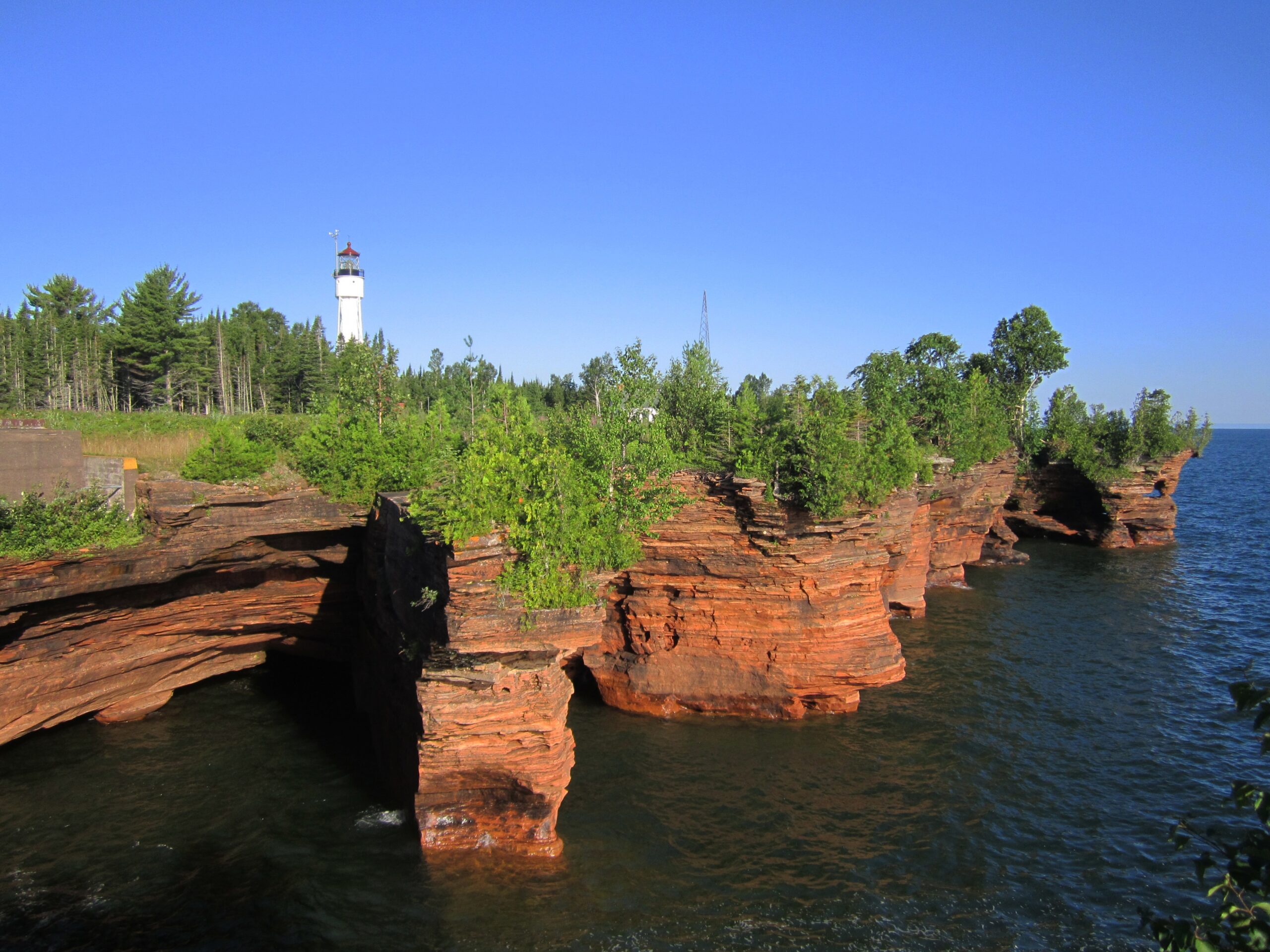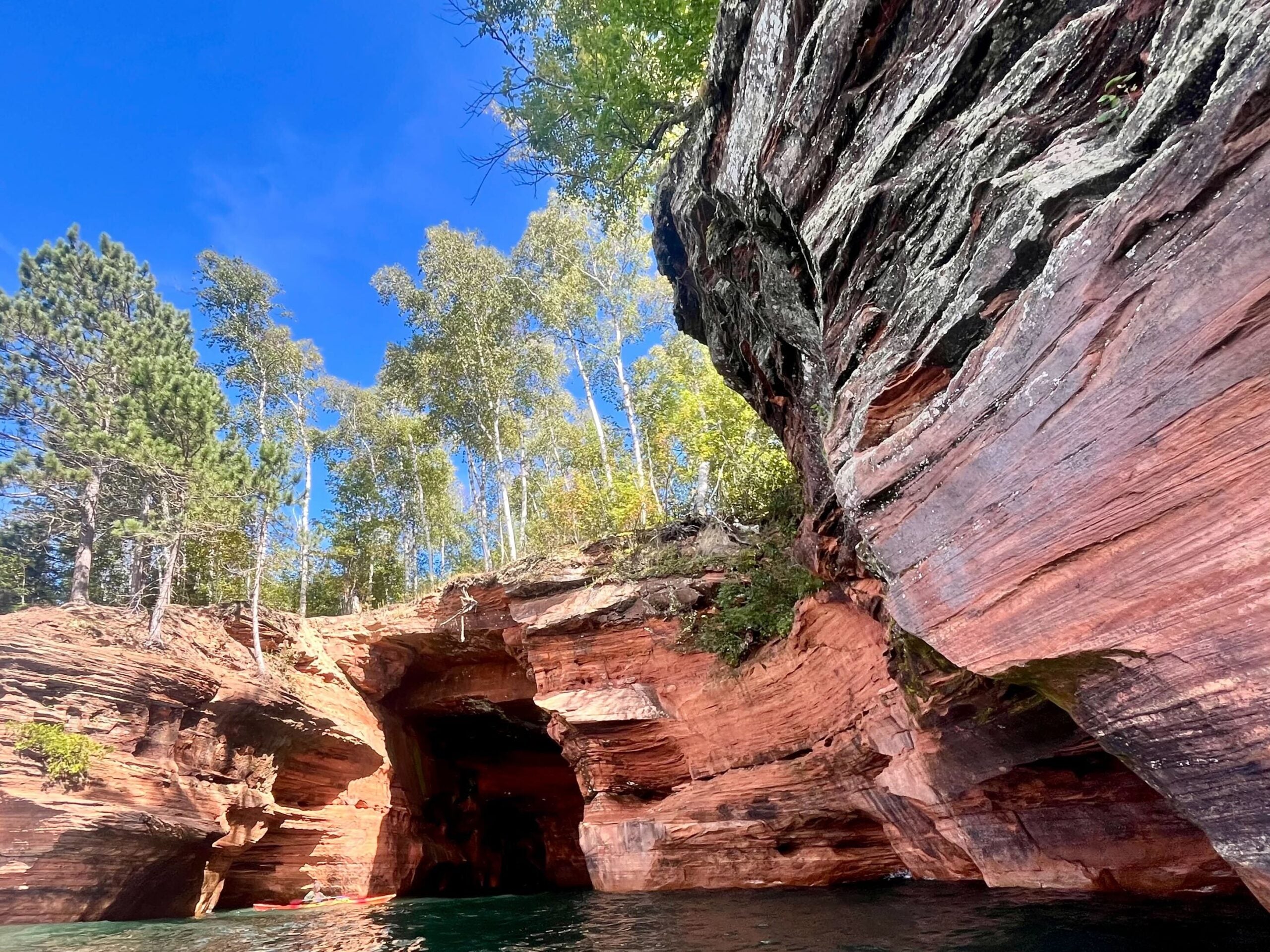Wisconsin Republican Congressman Tom Tiffany is introducing a bill that would designate the Apostle Islands as the state’s first national park.
The proposal would redesignate the Apostle Islands National Lakeshore as the Apostle Islands National Park and Preserve. The country has 63 national parks, but Wisconsin currently lacks any such designation.
While some elected leaders and communities applaud the bill, the proposal is sparking concerns among local officials about its effects on tribal treaty rights, housing, workforce and infrastructure.
Tiffany, who chairs a House subcommittee on federal lands, said people are drawn to the lakeshore’s historic lighthouses, shipwrecks, sandstone cliffs and sea caves. During a hearing Wednesday, Tiffany said designating the Apostle Islands as a national park would increase tourism and attract more visitors to the area.
Stay informed on the latest news
Sign up for WPR’s email newsletter.
“This will be a win for the people in my state and the country at large as more folks get to enjoy the crown jewels of Wisconsin,” Tiffany said.
First designated in 1970, the lakeshore includes 21 islands and covers more than 69,000 acres of land and water on Lake Superior. As written, the bill would maintain hunting on Sand Island, which would be designated as the Sand Island National Preserve.
Hunting is typically allowed at many national lakeshores, but it’s prohibited at national parks. That’s raising questions about the bill’s effects on treaty rights of the state’s Ojibwe tribes.
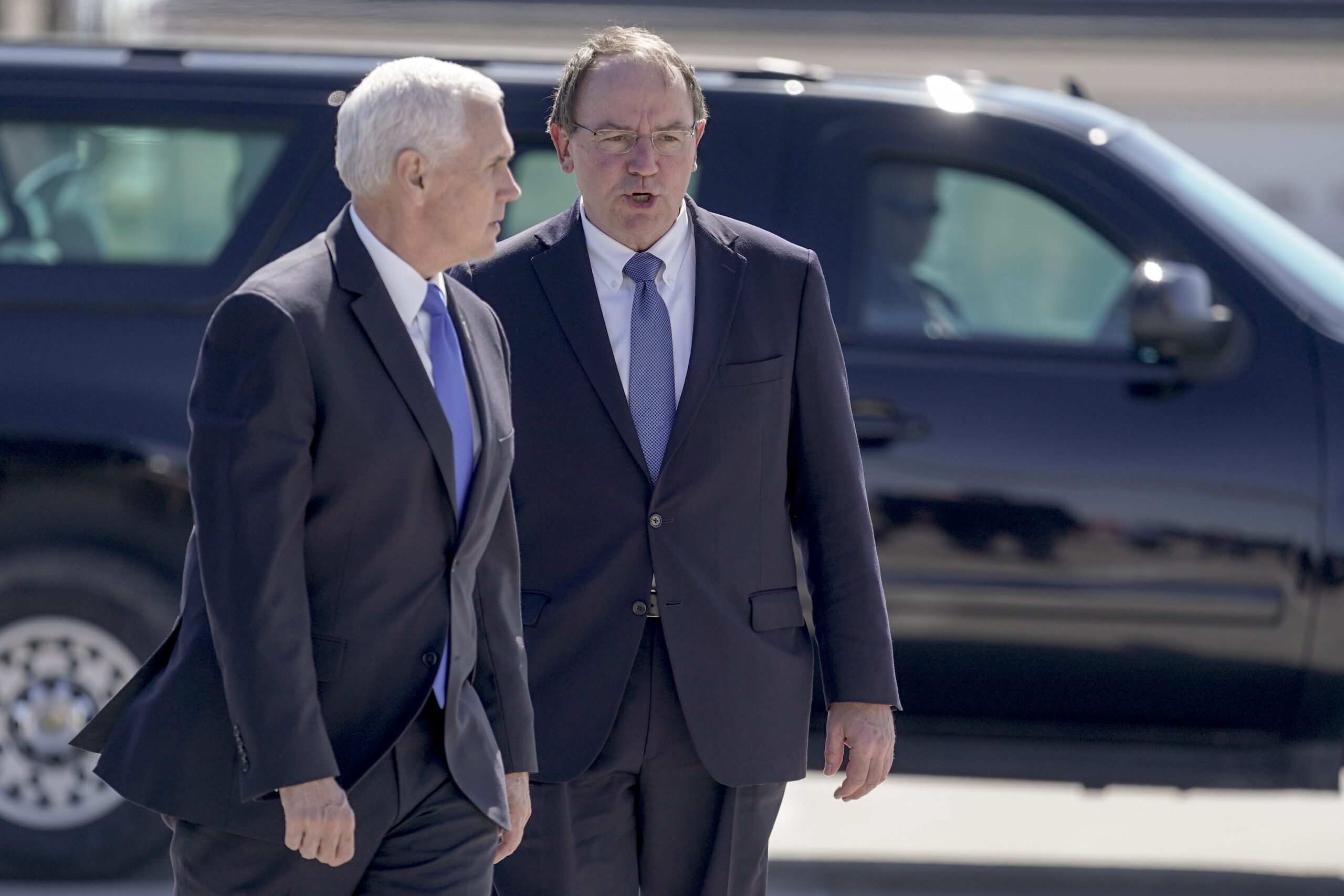
Frank Lands, deputy director of operations for the National Park Service, said during the hearing the proposal wasn’t introduced in time for the agency to develop a position on the bill. Even so, Lands recommended the bill clarify the relationship between the Apostle Islands National Park and the Sand Island National Preserve. The agency said it’s unusual to establish one unit of the park system within another.
Lands added the bill should reinforce the treaty rights of Ojibwe tribes, which have been upheld in a series of court rulings in recent decades.
“Part of the lakeshore is within the tribal reservation and the remaining lands are areas within the territory ceded by treaty with reservations to hunt, trap and gather,” Lands said. “We will be happy to work with you on these issues and any other issues that emerge as we continue our review.”
Tiffany said the bill would direct the National Park Service to enhance interpretative displays about the history of the area, as well as honor Ojibwe tribes. He said the proposal would “elevate their history” in the region as well.
The lakeshore lies within and next to the reservation of the Red Cliff Band of Lake Superior Chippewa. A spokesperson for the tribe did not immediately return requests for comment about the legislation Wednesday.
Local tourism officials, including Bayfield County Tourism Director Mary Motiff, say they need assurances the bill would protect treaty rights. They feel there’s been a lack of meaningful engagement on the proposal.
Motiff said she is also concerned a surge in tourism could exacerbate a shortage of housing and workers. She feared the region could have the same experience as ski towns out west where locals have been priced out of housing by a surge in short-term rentals, which communities can’t restrict under state law.
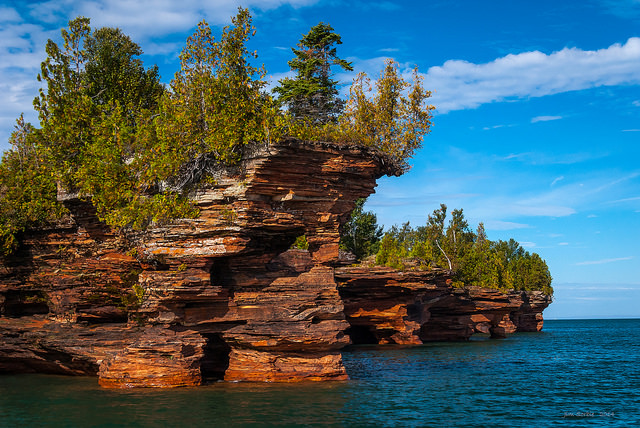
“If we don’t have enough affordable housing for our families and our workers and seasonal workers to live here and be able to afford to live here, we will not be able to support that tourism industry,” Motiff said. “It’s also a delicate balance with nature because nature is the primary thing we have to offer as an attraction. We need to protect that resource.”
Tourism is a vital part of Bayfield County’s economy, with the industry supporting one in five jobs. In 2023, tourism in the county generated $93 million in economic impact, the third consecutive record-breaking year. State figures show tourism supports around 700 jobs in the county.
Sen. Romaine Quinn, R-Cameron, testified that a national park designation would create a positive impact on the local economy.
“Bringing more visitors to the area who contribute to local businesses, including hotels, restaurants, shops, and recreational services,” Quinn said. “Increased tourism will create new job opportunities, stimulate economic growth and support the livelihoods of many residents in the Bayfield area and beyond.”
A 2018 paper by independent, nonprofit group Headwater Economics showed that visits increased about 21 percent on average among eight national parks that had been redesignated from national monuments.
Hundreds of thousands of people are already drawn to the islands each year. In 2014, the ice caves drew international attention when photos of massive ice formations went viral on social media. The islands drew in more than 290,000 visitors, creating an estimated $10 to $12 million economic boon in the Bayfield area. In 2021, during the COVID-19 pandemic, the lakeshore drew a record 290,961 visitors.
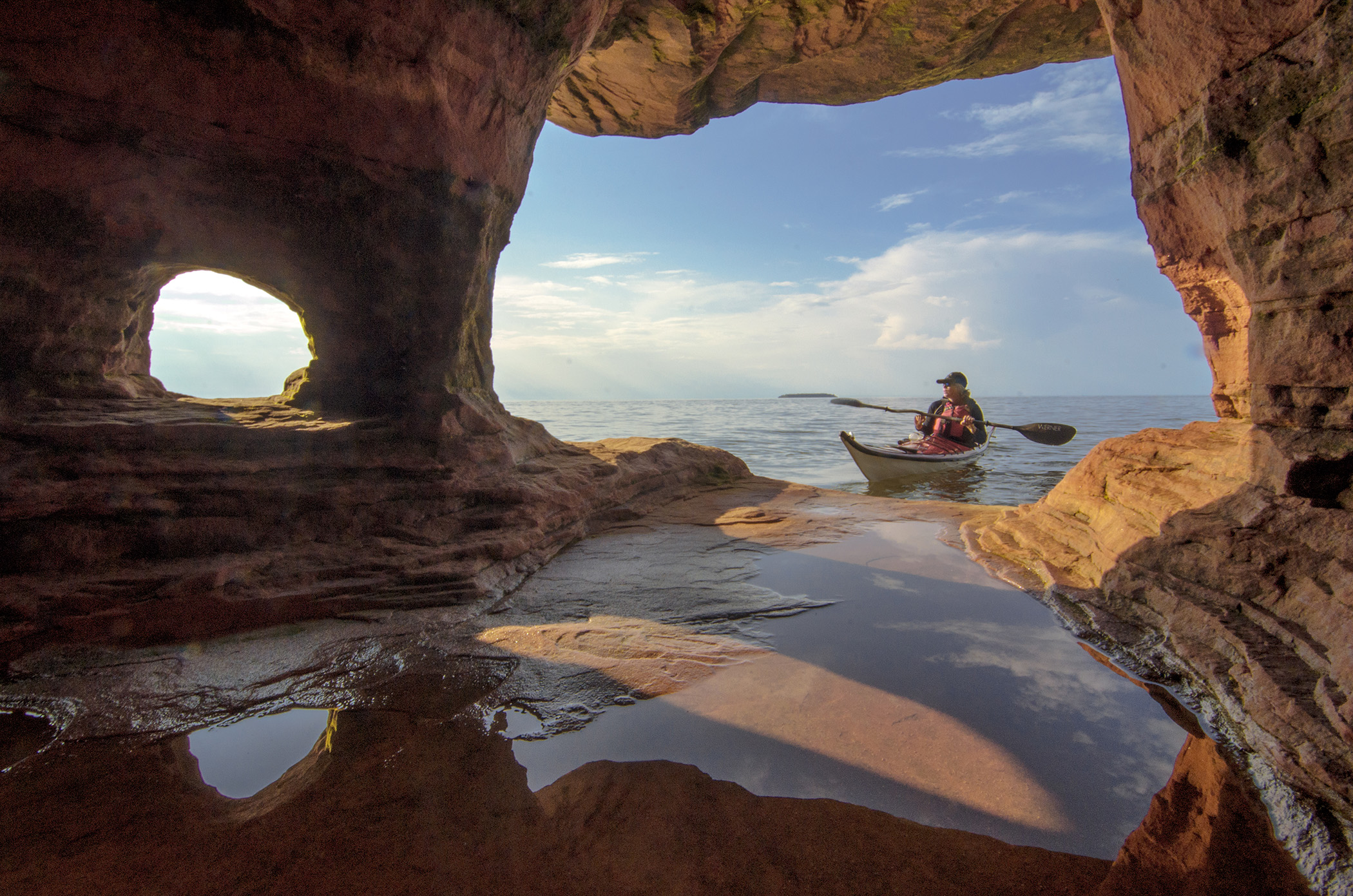
Even so, the potential influx of visitors is worrisome for Carol Fahrenkrog, executive director of the Bayfield Chamber and Visitor Bureau. She said around 1.5 million people visit Bayfield County each year.
“We are already struggling with the pretty key components that would help us be successful in meeting visitors,” Fahrenkrog said. “We need affordable housing. We are lacking in that greatly. We need more infrastructure for our police, for our roads, just to even meet what we have.”
She would like to see funding that addresses those needs before any increase in tourists.
Tiffany said the change would not be unprecedented, noting Indiana Dunes was redesignated as a national park. The number of visitors there increased from 1.75 million in 2018 to 2.13 million in 2019 following its redesignation. Motiff said she spoke with the park’s superintendent, who reported the number of people stopping at their visitors center doubled after the designation change.
She said that raises concerns since the National Park Service already had to reduce days of operation at the Northern Great Lakes Visitor Center in Ashland due to inadequate funding and staff. She said that doesn’t account for other issues related to the lakeshore’s backlog of deferred maintenance. While officials at Indiana Dunes say the change has yielded benefits overall, Motiff noted it hasn’t come without costs.
Local residents have also expressed concerns about the potential for mineral development on Sand Island if it’s designated as a preserve. Congress has permitted oil and gas exploration or extraction within those sites.
Even so, Tiffany contended there’s broad local support for the designation, citing 21 letters of support submitted by elected leaders and various groups. Those include northern Wisconsin GOP lawmakers, the Northwest Wisconsin Workforce Investment Board and towns in Bayfield and Sawyer counties.
Wisconsin Public Radio, © Copyright 2025, Board of Regents of the University of Wisconsin System and Wisconsin Educational Communications Board.
